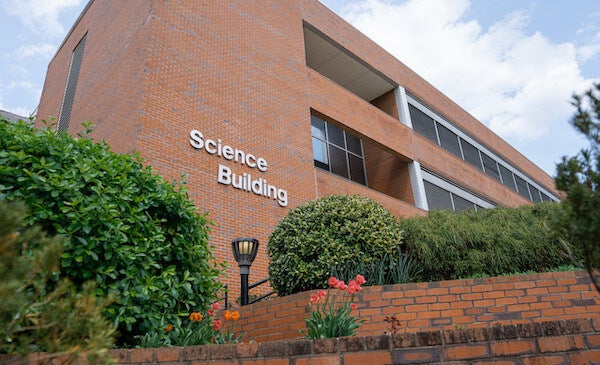Herpetofaunal and Small Mammal Survey
The award totaling more than $100,000 will continue research started in 2008, in which Marshall University researchers have monitored the eastern diamondback (EDB) rattlesnake population near the Marine Corps Recruit Depot in Paris Island, South Carolina.
The 13 years of research have provided data on EDB population dynamics that is needed to balance the species conservation with public perception and acceptance of the venomous species. The research was initiated in 2008 as a way to use a top predator to examine coastal effects of climate change, including sea-level rise and increased tropical storm frequency and severity.
The research was recently expanded to include small mammal monitoring as a measure of ecological integrity. The overall objectives of the research are to, 1) assess changes to the herpetofaunal community resulting from tropical storm damage and habitat modifications; 2) quantify small mammal occupancy and abundance; and 3) examine the effects of mammal occupancy on eastern diamondback rattlesnake abundance, distribution and habitat use. This research project will provide insight into acute and cumulative effects of tropical storms on sea island communities, assisting the U.S. Marine Corps with meeting their conservation goals.
Dr. Shane Welch, assistant professor of biological sciences at Marshall, is the principal investigator on the small mammal/herpetofaunal monitoring project research.
“Because small mammals are an important link between primary production and higher trophic levels, this research will benefit coastal conservation throughout the east,” Welch said.
Vegetation Survey and Assessment of Vegetation Vulnerability to Sea-Level Rise
Anticipated to take two years to complete, the more-than-$89,000 grant will go toward collecting baseline vegetation data throughout the habitats on the Marine Corps Depot for future assessment of climate change, including sea-level rise and storms. With recent hurricanes and tropical storms events in the region, sea-level rise and hurricane-related timber management activities have changed, causing small mammal populations to decrease.
Permanent plots will be selected randomly to represent existing vegetation types on the Parris Island Marine Corps Depot to identify those that are most vulnerable to storm surge and sea-level rise. A portion of the plots will coincide with the ongoing herpetofaunal and small mammal studies. An additional goal of the project is to use remotely sensed data to assess how sea-level rise and increases in storm surge have influenced the vegetation over the last 40 years.
Dr. Kyle Palmquist is the Principal Investigator for the vegetation survey.
“This project will generate fundamental baseline information on the diversity and distribution of vegetation types on Parris Island Marine Corps Depot and a platform for evaluating ongoing and future climate change impacts,” Palmquist said.

